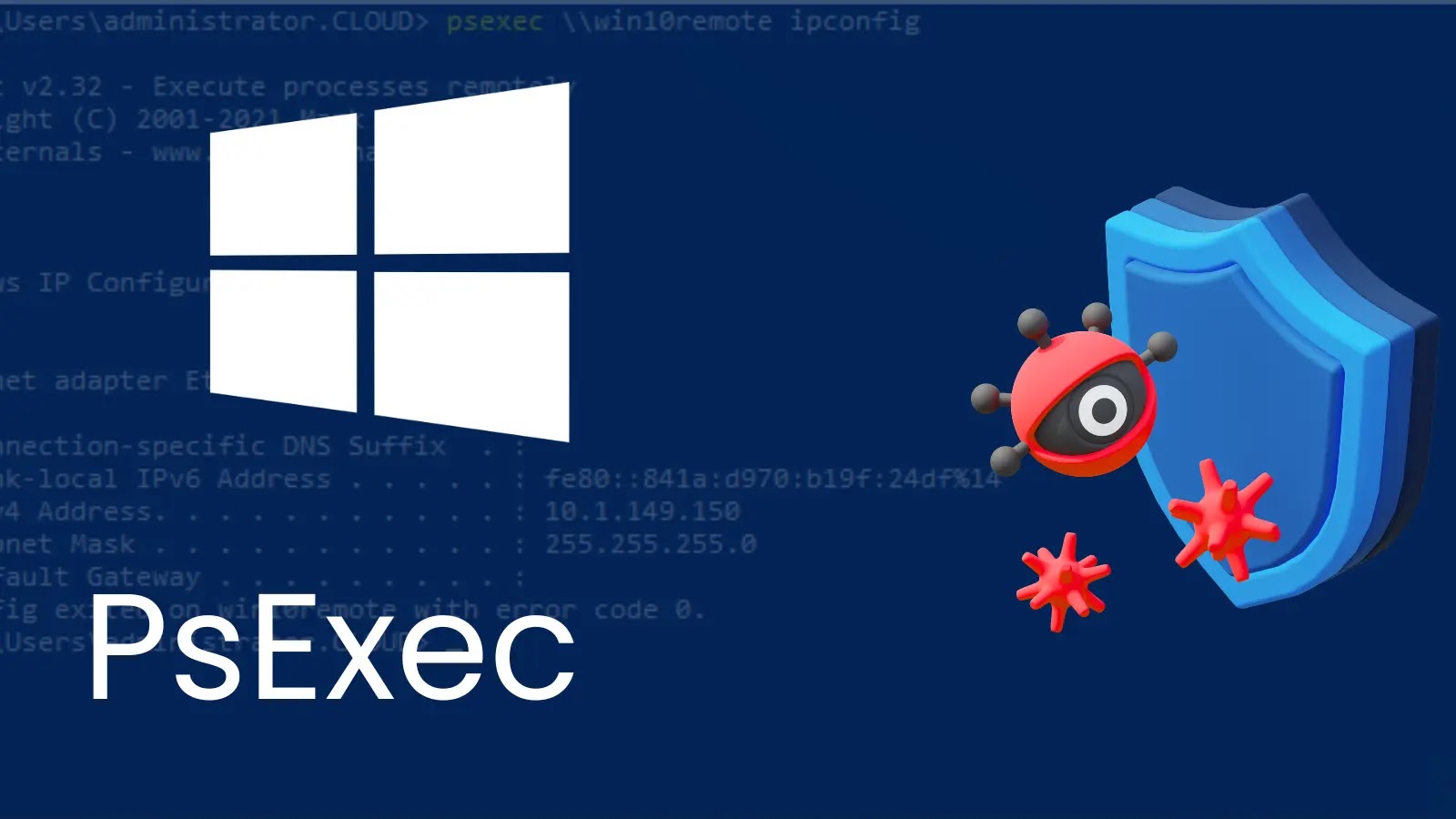
How Windows Command-line Utility PsExec Can Be Abused To Execute Malicious Code
In the complex landscape of cybersecurity, some tools walk a fine line, serving as legitimate assets for system administrators while simultaneously becoming potent weapons in the hands of malicious actors. One such utility, PsExec, stands out as a prime example. Designed for remote administration, its power and versatility have made it a cornerstone for system management, yet ironically, these same attributes are extensively abused for executing malicious code and facilitating lateral movement in cyberattacks.
Recent threat intelligence reports paint a stark picture: PsExec consistently ranks among the top five tools leveraged in cyberattacks. Ransomware collectives such as Medusa, LockBit, and Kasseika are frequently observed incorporating PsExec into their methodologies, underscoring its enduring appeal to adversaries. Understanding how this legitimate utility is weaponized is critical for any organization striving to bolster its defenses against sophisticated threats.
What is PsExec? A Legitimate Administrator’s Tool
PsExec is a lightweight telnet-replacement utility that allows system administrators to execute processes on other systems, complete with full interactivity for console applications, without manually installing client software. Part of the PsTools suite from Sysinternals (now Microsoft), it’s invaluable for managing remote Windows machines, deploying software, or running diagnostic commands across a network. It operates by creating a temporary service on the target machine, executing the specified command, and then removing the service, all typically initiated over SMB (Server Message Block) port 445.
The Abused Power: PsExec in Malicious Lateral Movement
The very features that make PsExec indispensable for administrators make it an ideal choice for attackers seeking to move laterally within a compromised network. Once an attacker gains initial access to one machine with administrative credentials (or credentials that can be elevated), they can use PsExec to:
- Execute arbitrary commands: This allows attackers to run scripts, deploy malware, or establish persistence mechanisms on remote systems.
- Deploy ransomware: Ransomware groups, including the likes of Medusa, LockBit, and Kasseika, frequently use PsExec to remotely initiate their encryption routines across multiple machines simultaneously, maximizing their impact.
- Exfiltrate data: Attackers can use PsExec to stage and transfer sensitive data from various compromised endpoints to a central collection point before exfiltration.
- Propagate backdoors: It can be used to install persistent backdoors or remote access tools (RATs) on numerous hosts without direct interaction.
- Disable security software: Adversaries often use PsExec to remotely execute commands that disable antivirus or EDR solutions, clearing the path for further malicious activities.
The key to PsExec’s abuse lies in its ability to operate stealthily, leveraging legitimate authentication mechanisms (if credentials are stolen or weak) and native Windows services, making detection challenging for many traditional security solutions.
Detection Challenges and Indicators of Compromise (IoCs)
Detecting PsExec abuse can be difficult because its activities often mimic legitimate system administration tasks. However, discerning malicious use requires vigilance and a deep understanding of network behavior. Key indicators of compromise include:
- Service Creation/Deletion: PsExec creates a service named
PSEXESVC(or a variant with a random name generated by newer versions) on the target system. Monitoring for the rapid creation and deletion of this service, especially on non-domain controllers or during unusual hours, can be a strong indicator. - Network Connections: Look for SMB (port 445) connections originating from unexpected sources or to unusual destinations, particularly when accompanied by command execution.
- Process Activity: Monitoring for the execution of
psexec.exe(or a renamed version) on source machines, coupled with subsequent process creations (likecmd.exe,powershell.exe, or known malware executables) on remote targets, is crucial. - Event Log Anomalies:
- Event ID 7045 (Service Installation): Look for the installation of the
PSEXESVCservice. - Event ID 4624 (Logon Type 3): Successful network logons associated with administrative accounts, particularly when followed by unusual process execution.
- Event ID 7045 (Service Installation): Look for the installation of the
- File Dropping: PsExec drops its executable component (or a temporary service executable) into the
%WINDIR%\System32or%WINDIR%\Tempdirectories on the target.
Remediation Actions and Mitigating PsExec Abuse
Combating the malicious use of PsExec requires a multi-layered security approach focusing on prevention, detection, and response. There isn’t a specific CVE associated with PsExec itself being a vulnerability, as it’s a legitimate tool. The risk lies in its abuse. Therefore, remediation focuses on controlling its operational environment.
- Implement Least Privilege: Ensure users and service accounts operate with the absolute minimum necessary privileges. This significantly curtails an attacker’s ability to move laterally even if they compromise an account.
- Strong Endpoint Detection and Response (EDR): Utilize EDR solutions capable of monitoring process creation, service installations, network connections, and file system changes across your endpoints. Configure EDR rules to flag suspicious PsExec-like behavior.
- Network Segmentation: Segment your network to limit an attacker’s lateral movement options. Isolate critical assets and ensure that administrative access to these systems is strictly controlled and monitored.
- Credential Hygiene:
- Enforce strong, unique passwords for all accounts.
- Implement multi-factor authentication (MFA) for administrative accounts and critical systems.
- Regularly rotate administrative passwords.
- Monitor & Alert: Continuously monitor security event logs (Windows Event Log IDs 4624, 4688, 7045, 5145, etc.) and network traffic for anomalies indicative of PsExec abuse. Integrate these logs into a SIEM for correlation and alerting.
- User Account Control (UAC): While UAC doesn’t prevent PsExec entirely, ensuring it’s enabled and configured correctly can add an additional layer of friction for attackers.
- Application Whitelisting/Control: Implement application control policies (e.g., Windows Defender Application Control, AppLocker) to prevent unauthorized executables from running on systems, including potentially renamed PsExec utilities.
- Remove Unused PsExec Instances: If PsExec is not frequently used for legitimate administration, consider removing it from standard user workstations or limiting its presence to jump servers.
Tools for Detection and Mitigation
Effective defense against PsExec abuse involves a combination of monitoring, detection, and preventive tools. Here are some key resources:
| Tool Name | Purpose | Link |
|---|---|---|
| Windows Event Log / PowerShell | Native logging for service installations (Event ID 7045), process creation (4688), network logons (4624), useful for detection scripting. | Microsoft Documentation |
| Sysmon | Detailed system activity monitoring, including process creation, network connections, and service events, highly effective for detecting PsExec patterns. | Sysinternals Sysmon |
| Endpoint Detection and Response (EDR) Solutions | Comprehensive threat detection, investigation, and response; essential for identifying and preventing advanced lateral movement techniques. | (Vendor Dependent – e.g., CrowdStrike, SentinelOne, Microsoft Defender for Endpoint) |
| Security Information and Event Management (SIEM) | Centralized logging and analysis, enabling correlation of events across the network to identify attack chains involving PsExec. | (Vendor Dependent – e.g., Splunk, QRadar, Elastic Security) |
| Group Policy Objects (GPO) | Used to enforce security configurations, including UAC settings, audit policies, and potentially software restriction policies. | Microsoft Security Compliance Toolkit |
Conclusion
PsExec exemplifies the dual nature of powerful administrative tools – invaluable for legitimate IT operations, yet equally potent in the hands of malicious actors. Its consistent presence in top threat intelligence reports and its favored status among prominent ransomware groups like Medusa, LockBit, and Kasseika underscore the critical need for robust defense strategies. By understanding how PsExec is abused, implementing stringent access controls, bolstering endpoint detection, and maintaining diligent network visibility, organizations can significantly diminish the risk of this legitimate utility facilitating destructive cyberattacks.





